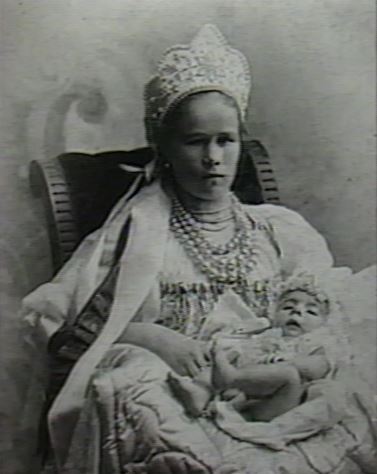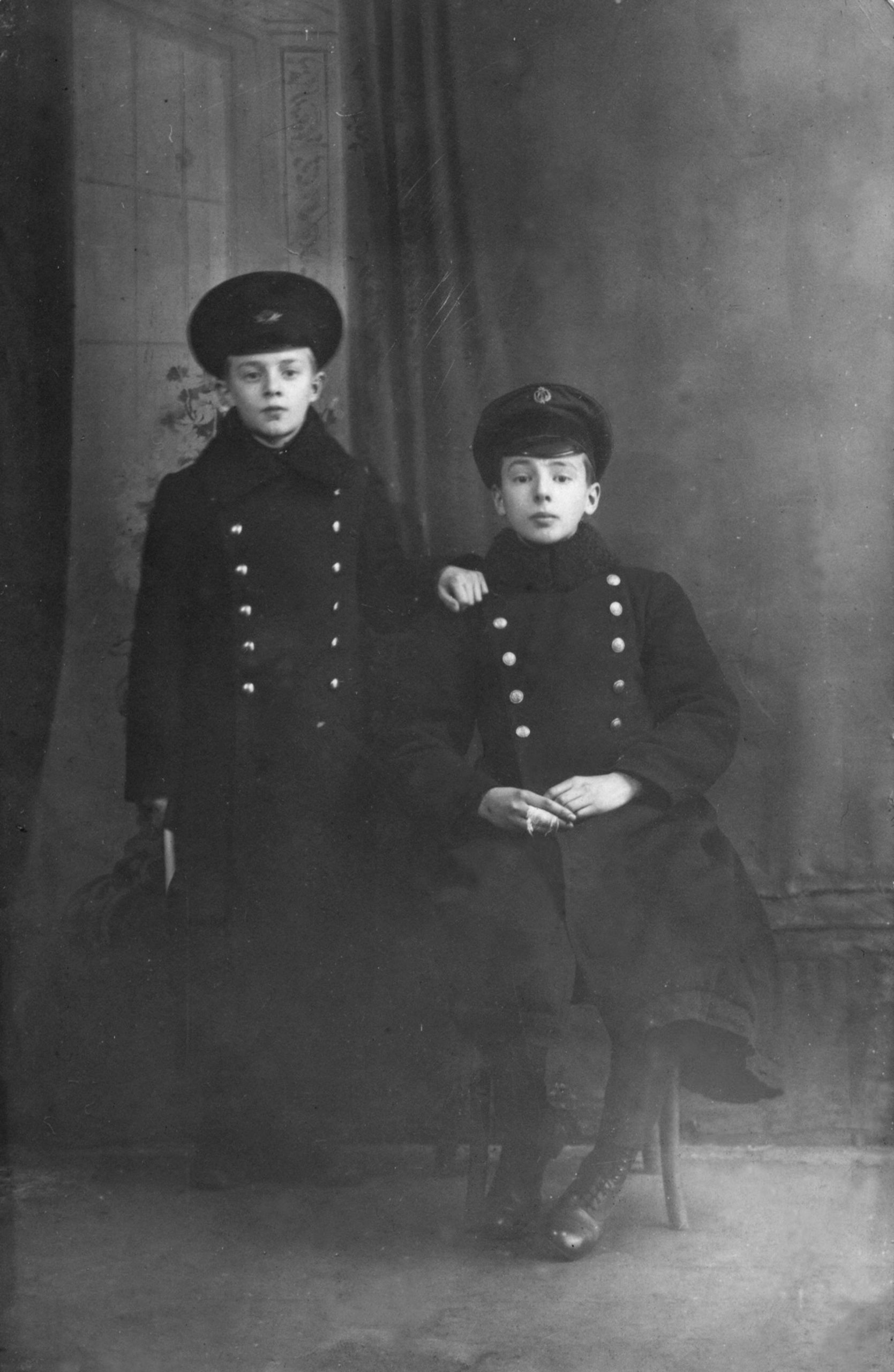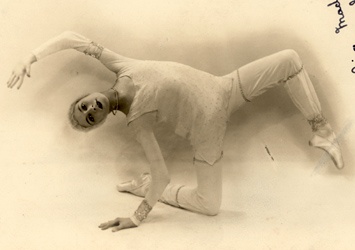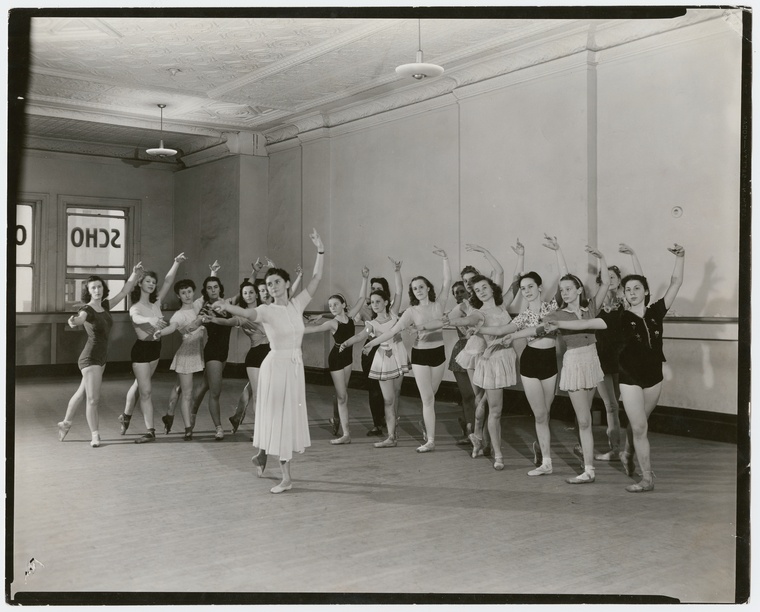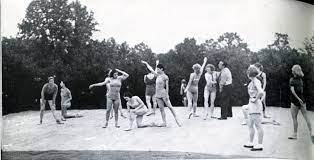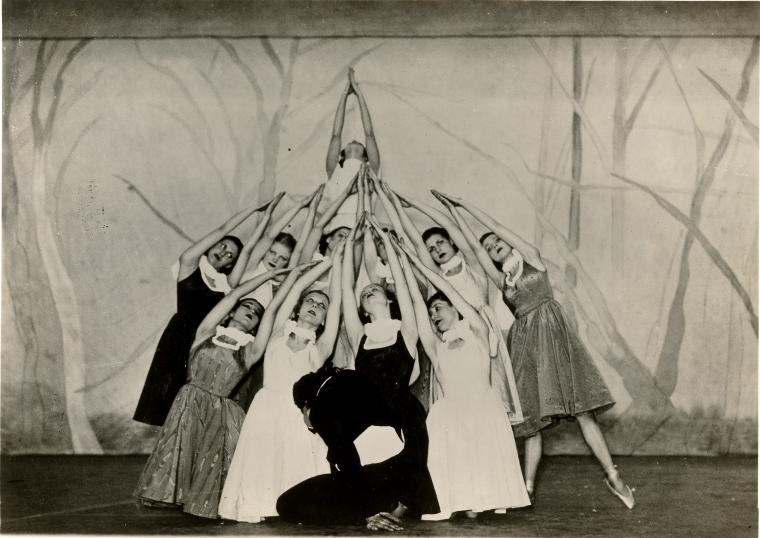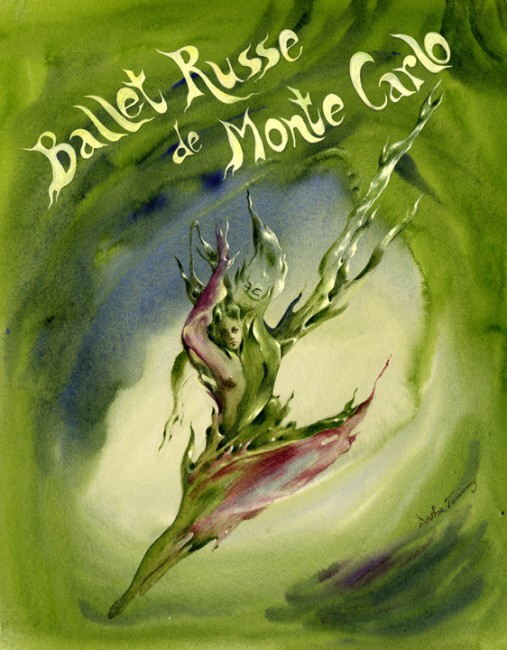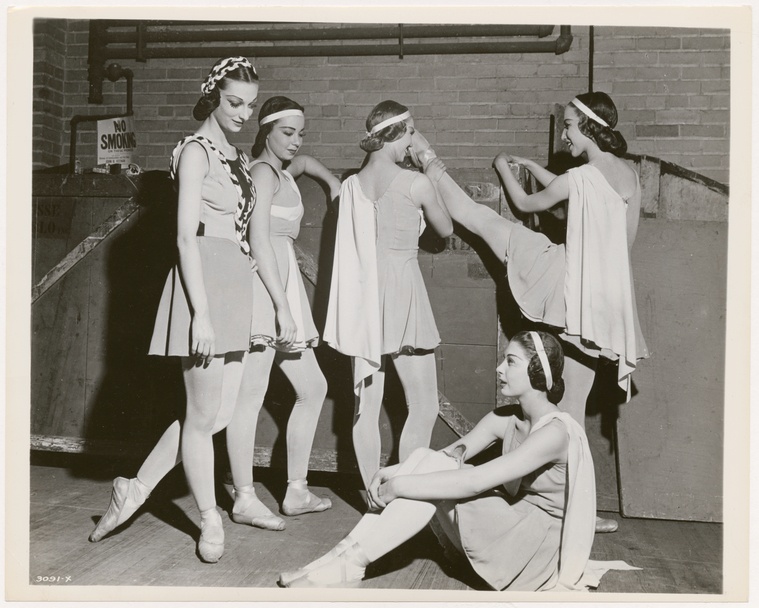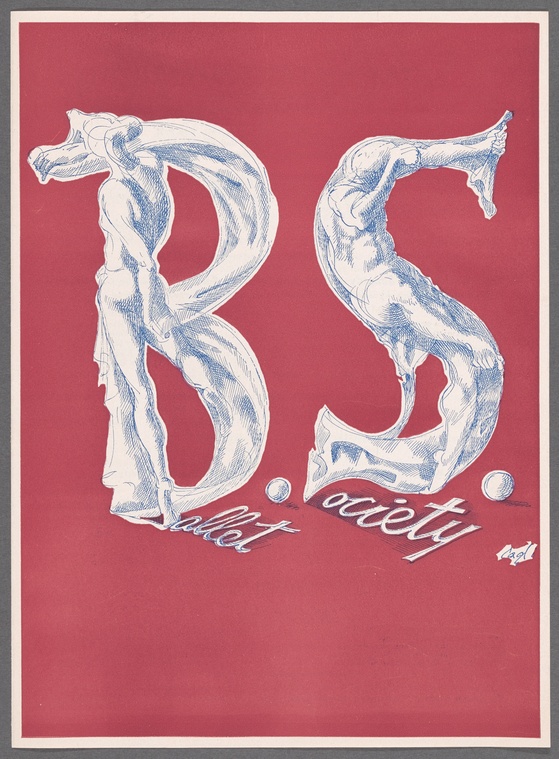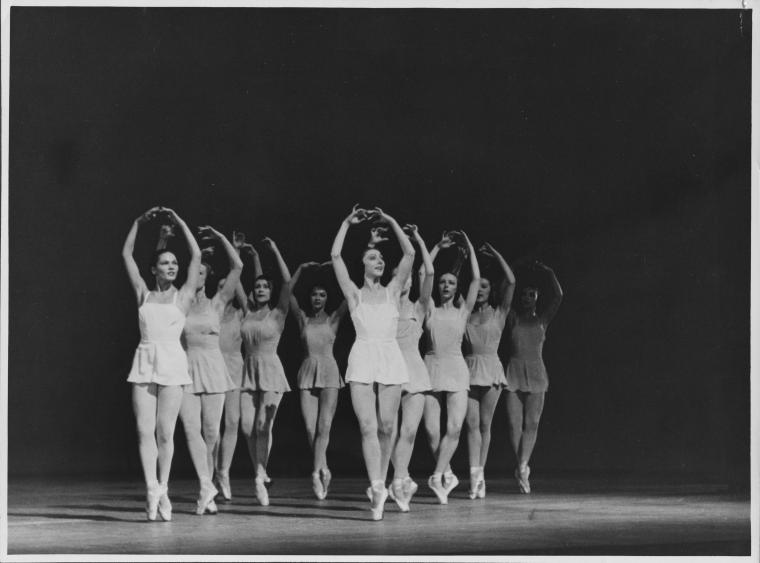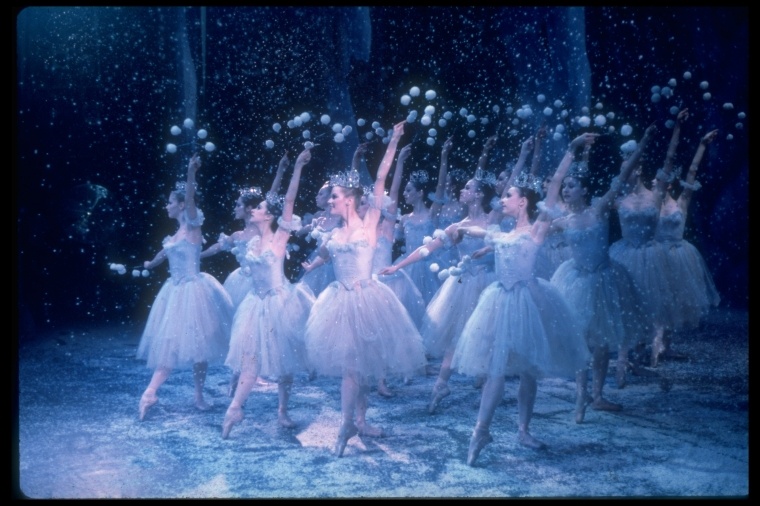George Balanchine, born Georgi Melitonovitch Balanchivadze in 1904, was accepted into the ballet section of St. Petersburg’s rigorous Imperial Theater School at the age of nine where he appeared in productions at the Maryinsky Theater including Marius Petipa’s The Sleeping Beauty. The son of a composer, Balanchine also had extensive musical training that ultimately enabled him, as a choreographer, to translate music into dance in an unprecedented way. Growing up in the upheaval of the Russian Revolution, he often relied on his musical abilities by playing in cabarets and silent movie houses in exchange for bread when money was worthless.
Balanchine began to choreograph in his teens, creating his first work around 1920, La Nuit, for himself and a female student. In 1924, Balanchine and his small troupe of dancers, including Tamara Geva, Alexandra Danilova, and Nicholas Efimov, were permitted to leave the newly formed Soviet Union for a tour of Western Europe. They never returned. The dancers were invited by the impresario Serge Diaghilev to audition for his renowned Ballets Russes and taken into the company. Diaghilev also hired Balanchine as a principal choreographer. Balanchine’s first substantive effort was Ravel’s L’Enfant et les Sortilèges, then a reworking of Stravinsky’s Le Chant du Rossignol, in which a 14-year-old Alicia Markova made her stage debut. Through 1929, when the Ballets Russes collapsed with Diaghilev’s death, Balanchine created nine more ballets, including the quintessential Apollon Musagète and Prodigal Son.
After a period of uncertainty, Balanchine subsequently formed Les Ballets 1933 with Boris Kochno, Diaghilev’s last private secretary, as artistic advisor and the backing of British socialite Edward James. For the company’s first and only season he created six new ballets in collaboration with leading artistic figures including Bertolt Brecht and Kurt Weill (The Seven Deadly Sins), artist Pavel Tchelitchew (Errante), and composer Darius Milhaud (Les Songes). Though the troupe disbanded in a matter of months, during its London engagement a meeting occurred that changed the history of 20th century dance. The young American arts patron Lincoln Kirstein had a dream to establish a ballet company in America, filled with American dancers and not dependent on repertory from Europe. Kirstein met Balanchine after a Les Ballets 1933 performance and outlined his vision; Balanchine agreed to come to the United States and arrived in New York in
October 1933.
“But first, a school,” Balanchine is famously reported to have said to Kirstein, and the first product of their collaboration, the School of American Ballet, was founded in 1934 and remains in operation to this day, training dancers for the New York City Ballet and companies worldwide. The first ballet Balanchine choreographed in America, Serenade, to Tschaikovsky, was created for students of the School and originally performed at the summer home of Kirstein’s Harvard colleague and funder of the school Edward M. M. Warburg. Balanchine and Kirstein then created the American Ballet, which for three years was the resident ballet company at the Metropolitan Opera. Ultimately this was not an amicable partnership as the Met had little interest in furthering the cause of the ballet and the relationship ended in 1938, inspiring Balanchine to explore choreography in musical theater and Hollywood.
In 1941, he and Kirstein assembled another short-lived classical company, American Ballet Caravan, and the repertory included two major new Balanchine works, Concerto Barocco and Ballet Imperial (Tschaikovsky Piano Concerto No. 2). Between 1944 and 1946 Balanchine was engaged to revitalize Sergei Denham’s Ballet Russe de Monte Carlo, and choreographed Danses Concertantes, Raymonda, and Night Shadow (later La Sonnambula) for extensive touring around the country for nine months of the year.
In 1946 Balanchine and Kirstein formed Ballet Society, presenting such new works as The Four Temperaments and Orpheus, on the strength of which Morton Baum, Chairman of the Executive Committee of the New York City Center of Music and Drama, invited the company to join City Center. With the performance of October 11, 1948, consisting of Concerto Barocco, Orpheus, and Symphony in C, New York City Ballet was born.
From that time until his death in 1983, Balanchine served as ballet master and chief choreographer for the New York City Ballet. The Foundation’s catalogue of Balanchine’s output lists over 425 works, beginning with La Nuit and ending with Variations for Orchestra in 1982. These include Balanchine’s work in musical theater and for Hollywood. Balanchine staged many of his ballets (or excerpts) for television, allowing a significantly wider audience to see his work, and he also created new work especially designed for the medium.
As his reputation grew, Balanchine was the recipient of much official recognition. In 1975, the Entertainment Hall of Fame in Hollywood inducted Balanchine as a member, the first choreographer so honored. That same year, he received the French Légion d’Honneur. In 1978, he was one of five recipients of the first Kennedy Center Honors and was also presented with a Knighthood of the Order of Dannebrog, First Class, in Denmark. In 1980, Balanchine was honored by the National Society of Arts and Letters with their Gold Medal award, the Austrian government with its Austrian Cross of Honor for Science and Letters, First Class, joining his previous honors as French Commander of the Order of Arts and Letters and the National Institute of Arts and Letters award for Distinguished Service to the Arts. The last major award he received, in absentia, was in 1983 for the Presidential Medal of Freedom.
On April 30, 1983, George Balanchine died in New York at the age of 79.


